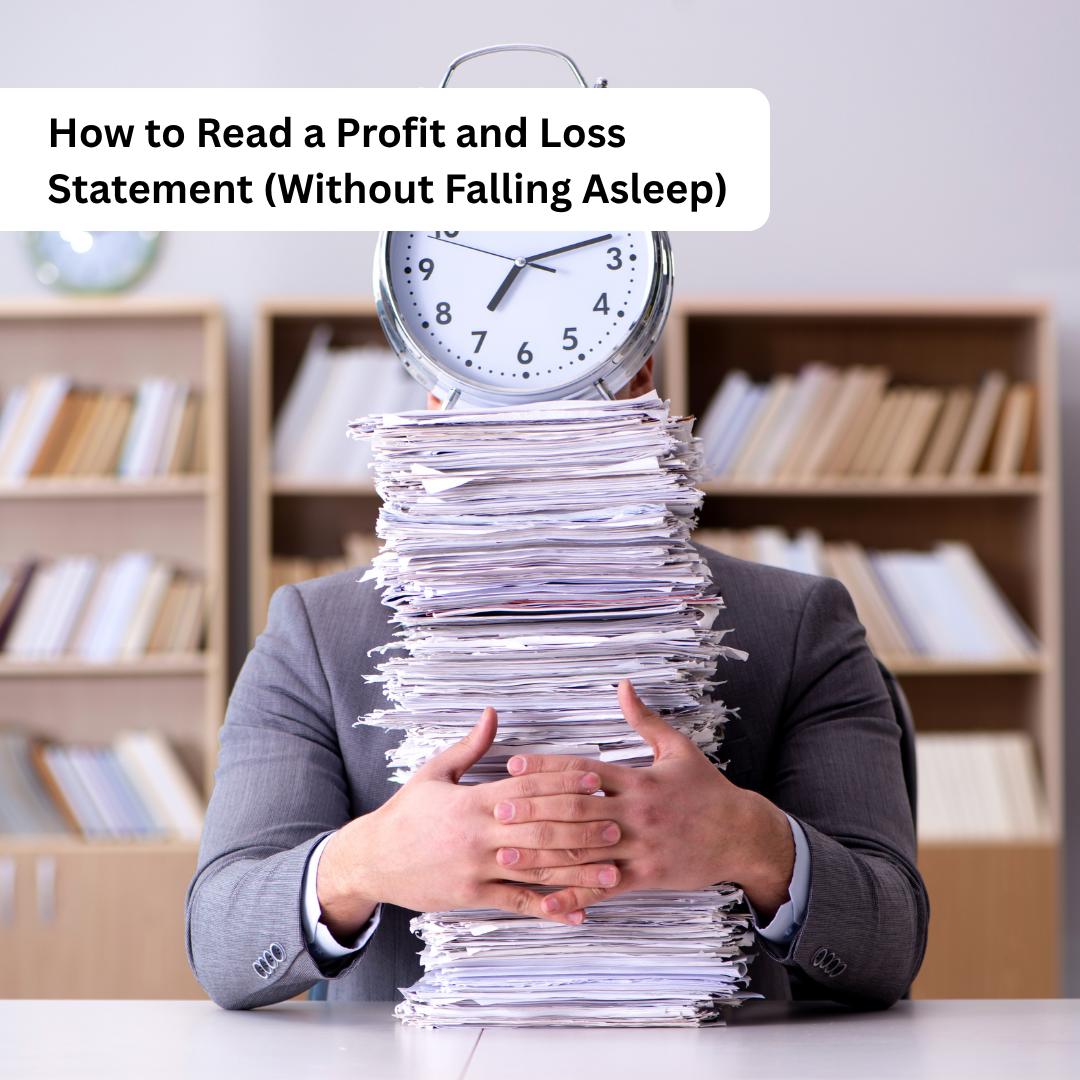How to Read a Profit and Loss Statement (Without Falling Asleep)
If you own a business, your Profit and Loss statement (also called a P&L statement or income statement) is one of the most important financial reports you’ll ever look at.
It shows whether you’re actually making money, or just moving it around.
The problem? Most people glaze over five seconds in. So here’s how to read your profit and loss statement like a pro, in plain English.
What Is a Profit and Loss Statement?
A Profit and Loss statement summarizes your company’s revenue, expenses, and profit over a set period (usually a month, quarter, or year).
In simple terms:
Revenue (income) – money coming in
Expenses – money going out
Net profit (or loss) – what’s left after everything is paid
Your P&L answers one core question: Is my business profitable?
Example:
If your business earns $200,000 in revenue and spends $150,000 in expenses, your profit is $50,000. That’s your bottom line.
How to Read a Profit and Loss Statement Step by Step
1. Review Your Revenue (Top Line)
Your revenue section shows all the income your business earned during the period.
Look for patterns: Is revenue growing or shrinking each month?
Break down by product, service, or client type if possible.
Ask: Which income streams are driving my growth?
SEO tip: Business owners often search for “what should be included in revenue on a P&L”. Make sure your answer covers sales, service income, commissions, and any other income sources.
2. Examine Your Expenses
Your expenses reveal where your money is going.
Common categories include payroll, rent, software, marketing, and supplies.
Quick check:
If your expenses are increasing faster than revenue, your profit margin is shrinking — not a good sign.
Pro tip:
Separate expenses into “essential” and “optional.” Cutting even 5% of wasteful spending can make a big difference in your bottom line.
3. Find Your Net Profit (Bottom Line)
At the bottom of your P&L is the number that matters most: Net Profit.
If it’s positive — congrats, you made money.
If it’s negative — you’re spending more than you earn.
Formula:Revenue – Expenses = Net Profit
Knowing your profit margin (profit ÷ revenue) helps you see how efficiently you run your business.
Aim for at least 10–20% net profit for healthy operations, depending on your industry.
How to Use Your Profit and Loss Statement to Grow Your Business
Once you understand the numbers, your P&L becomes a growth tool, not just a report for tax season.
Here’s how:
Compare monthly trends: Spot dips in revenue or rising costs early.
Identify your best customers or services: Double down on what’s working.
Prepare for taxes: Avoid surprises at year-end.
Plan for hiring or scaling: Confidently decide when you can afford to expand.
The goal isn’t just to read your profit and loss statement. It’s to use it to make better business decisions.
Simplify Your P&L (and Save Hours Each Month)
If your P&L is confusing or cluttered, it’s not your fault, it’s your setup. Most business owners just need clean, categorized books and a simple monthly report that makes sense.
That’s where we come in.
At Red Leaf Bookkeeping, we organize your books in QuickBooks Online so you always know your numbers, without the spreadsheets, stress, or late nights.
👉 Book a free Money Clarity Call and finally understand what your Profit & Loss statement is telling you.
